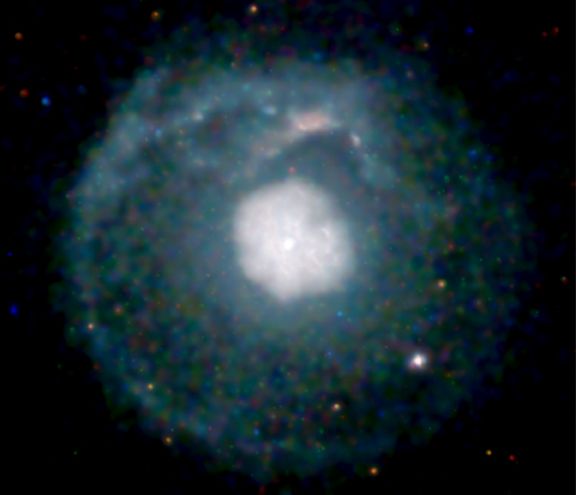
|
Explanation: The picture is lovely, but this pretty cosmic shell was produced by almost unbelievable violence - created when a star with nearly 20 times the mass of the sun blasted away its outer layers in a spectacular supernova explosion. As the expanding debris cloud swept through surrounding interstellar material, shock waves heated the gas causing the supernova remnant to glow in x-rays. In fact, it is possible that all supernova explosions create similar shells, some brighter than others. Cataloged as G21.5-0.9, this shell supernova remnant is relatively faint, requiring about 150 hours of x-ray data from the orbiting Chandra Observatory to create this false-color image. G21.5-0.9 is about 20,000 light-years distant in the constellation Scutum and measures about 30 light-years across. Based on the remnant's size, astronomers estimate that light from the original stellar explosion first reached Earth several thousand years ago.
|
January February March April May June July August September October November December |
| ||||||||||||||||||||||||||||||||||||||||||||||||
NASA Web Site Statements, Warnings, and Disclaimers
NASA Official: Jay Norris. Specific rights apply.
A service of: LHEA at NASA / GSFC
& Michigan Tech. U.
Based on Astronomy Picture
Of the Day
Publications with keywords: supernova - supernova remnant - massive stars
Publications with words: supernova - supernova remnant - massive stars
See also:
- APOD: 2025 October 1 Á NGC 6960: The Witchs Broom Nebula
- APOD: 2025 July 31 Á Supernova 2025rbs in NGC 7331
- APOD: 2025 June 9 Á Between Scylla and Charybdis: A Double Cosmic Discovery
- Supernova Remnant Cassiopeia A
- APOD: 2025 January 8 Á Supernova Remnants Big and Small
- APOD: 2024 September 18 Á The Mermaid Nebula Supernova Remnant
- APOD: 2024 April 16 Á Filaments of the Vela Supernova Remnant
